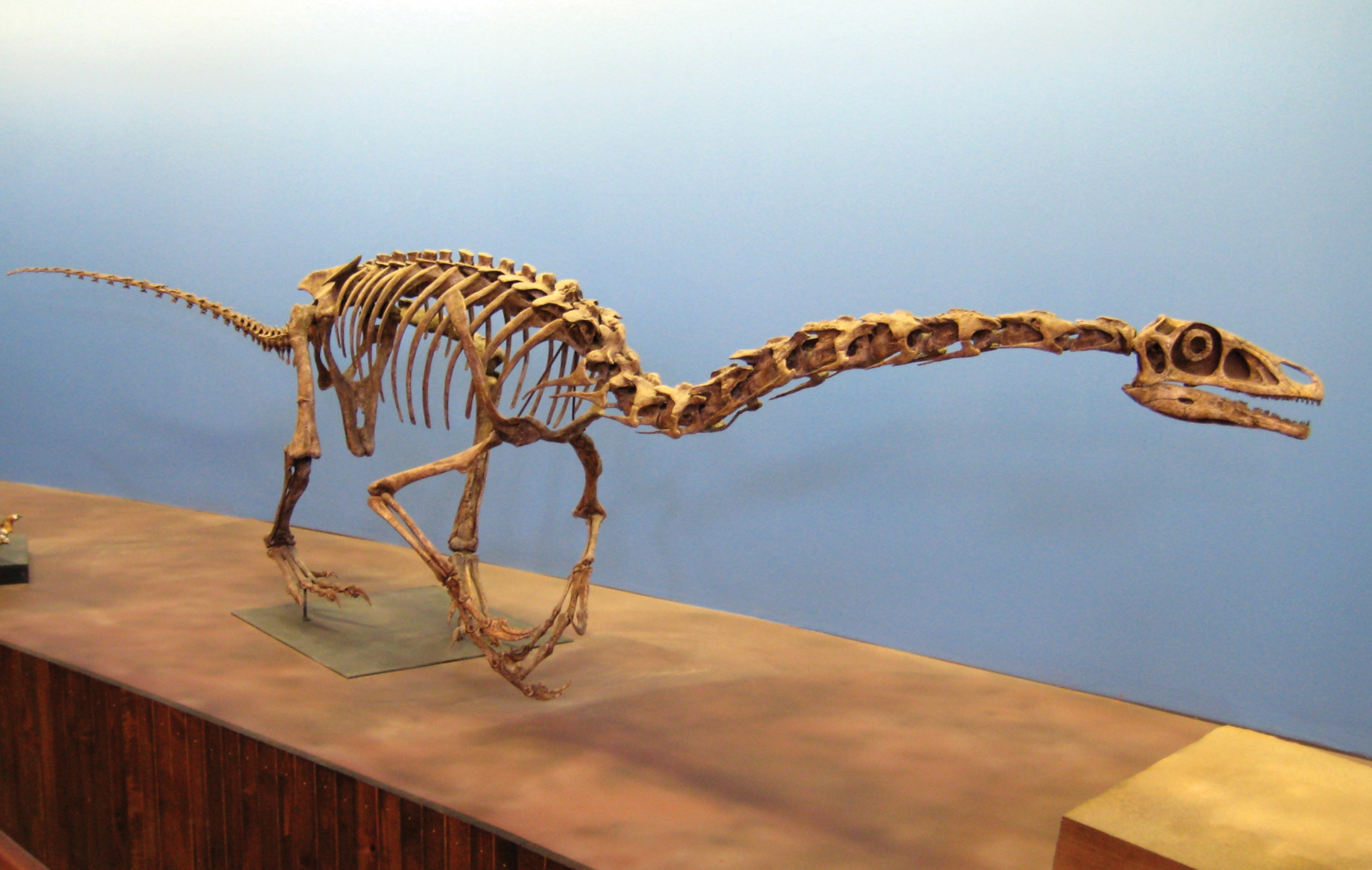What should you do if you find a fossil? Can you keep it? Should you report it?
By Carole McCalla and Sandy Eldredge
Fossils – remains, traces, or imprints of past plant and animal life – are widely found throughout Utah. Depending on land ownership, some fossils can be collected for personal non-commercial use.
However, vertebrate fossils (see description below) may not be collected on any federal or state lands.
Whether you can keep a fossil or not depends on
- the type of fossil, and
- who owns or manages the land where the fossil was found.
Types of fossils
Vertebrate fossils are from animals that have a backbone. The fossils include bones, teeth, skin impressions, footprints, tail drags, and other traces of activity. Vertebrates found in Utah include dinosaurs, fish, turtles, and mammals such as mammoths and musk oxen.
Invertebrate fossils refer to animals that do not have a backbone, such as trilobites, ammonites, clams, snails, coral, shellfish, and insects.
Plant fossils are any remains or traces of ancient plants, including pine cones, impressions of leaves and stems, and petrified wood.
Land status in Utah
Federal lands are managed by a federal government agency: the Bureau of Land Management (BLM), U.S. Forest Service (USFS), National Park Service, Bureau of Reclamation, Department of Defense, U.S. Fish and Wildlife Service, or Bureau of Indian Affairs. Of these agencies, only the BLM and USFS allow some fossil collecting.
State lands are mostly managed by the School and Institutional Trust Lands Administration (Trust Lands).
Private lands are held by private owners (including local governments and Indian tribes).
Steps to take
-
- Determine ownership of the land you intend to visit. Consult surface-management-status maps (sold by various agencies and outlets including the UGS and BLM).
- Become familiar with the regulations that apply to collecting on the various lands. Refer to the UGS flier Publication Information Series 23, Rules and Regulations Regarding Rock, Mineral, and Fossil Collecting in Utah, which is available at the Natural Resources Map & Bookstore or online.
- Contact the appropriate land manager/owner to inquire about any specific regulations.
Some general fossil collecting rules in Utah
- Vertebrate fossils may not be collected on any federal or state lands except under permits issued to accredited institutions.
- Invertebrate and plant fossils may be collected (in reasonable amounts if collection is for personal, non-commercial purposes) on BLM, USFS, and state-administered Trust Lands with the following conditions:
- Some BLM lands may be closed to collecting for various reasons. Inquire at the appropriate local BLM office.
- Collecting permits are required on USFS lands and may vary per district. Contact the applicable USFS district.
- Collecting on state-administered Trust Lands requires a permit and payment of an annual fee. Permits may be obtained at Trust Lands offices.
- Permission is required to collect on private lands. Always check with the landowner before removing any fossils.
- Private landowners have the right to keep any fossils found on their property. They are urged to report any fossil finds to the UGS (see below).
Report your fossil find!
Many fossil finds end up in private collections, depriving the public and scientists of vital opportunities for research, education, and display. Therefore, no matter where you find a fossil or what the fossil is, the UGS strongly encourages you to report your find to the State Paleontologist or other paleontology staff at the UGS. Then, the site of your discovery will be documented for scientific purposes!
Illegal fossil collecting in Utah puts man in jail.
A fossil hunter who in 2001 found a site on BLM land filled with dinosaur bones was removing and selling the bones illegally on the black market. Fortunately, once he discovered parts of a distinctive dinosaur neck, he turned the site over to paleontologists.
The site revealed thousands of bones from babies to adults that were identified as being from a very significant new dinosaur species – Falcarius utahensis. Convicted of theft of government property, the individual served a five-month prison term and paid a $15,000 fine.
Couple gets a dinosaur leg bone named after them for reporting their discovery.
In 2007, John and Brenda Bell stumbled across a 4-foot-long fossilized bone while hiking near Arches National Park. Although not experts, the Bells were sure the bone was from a dinosaur and wisely left it undisturbed and then notified the State Paleontologist at the UGS.
The next week, they returned to the site with UGS staff and volunteer assistants. The Bells helped excavate the bone, which was identified as the tibia (shin bone) from one of the largest (up to 90 feet in length) long-necked, long-tailed dinosaurs – the Diplodocus.
The couple’s discovery is unofficially named “Bell’s Bone.” Had it been a new dinosaur species, it might have been officially named after them.
Survey Notes, v. 41 no. 3, September 2009























